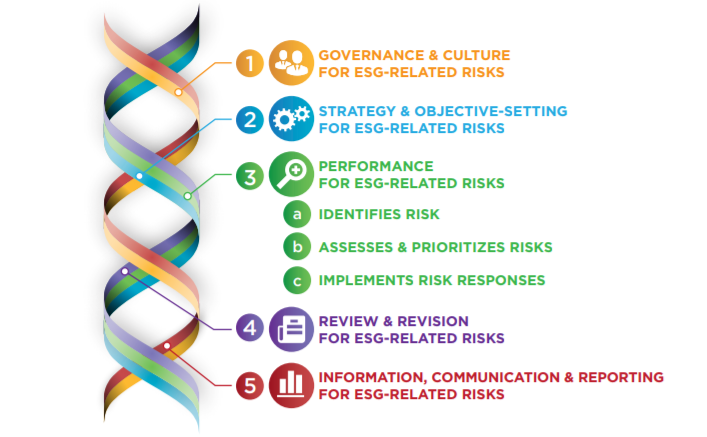The 2018 World Economic Forum’s Global Risks Report, which reflects the sentiment of the global business community, lists extreme weather events, water crises, natural disasters and failure of climate change mitigation and adaptation as four of the top five risks facing the global economy. Increasingly, companies are recognizing the real risks and opportunities that these issues present for their bottom line.
And when it comes to risk management, one of the most widely recognized and applied frameworks is that of the Committee of Sponsoring Organizations of the Treadway Commission (COSO): Enterprise Risk Management – Integrating with Strategy and Performance. Since its introduction in 2004, companies have been using this framework “to create, preserve, sustain and realize value while improving their approach to managing risk.” Yet even companies that provide thorough reports on issues like overexploitation of resources, drought, flooding and wildfires have often found it difficult to use these reports to inform their operations, reports, governance and management strategies.
The newly released Guidance for Applying Enterprise Risk Management to Environmental, Social and Governance (ESG)-related Risks, a publication of COSO and the World Business Council for Sustainable Development (WBCSD), is intended to address this challenge. The guidance will help companies and other organizations integrate and manage their ESG-related risks and identify opportunities ESG present to their bottom line.
The newly released supplemental guide offers a five-step approach designed to help corporate decision-makers and risk management and sustainability managers pragmatically respond to ESG concerns, beginning with the establishment of governance structures and processes such as identifying, assessing, responding, reviewing and communicating risks.
“The Guidance is a valuable contribution for applying COSO’s ERM Framework to ESG-related risks,” said Paul Sobel, COSO Chairman. “The prevalence of ESG-related risks globally is increasing, and there is a growing demand from stakeholders for ESG-related insight. Using the common language of ERM, this Guidance helps to meet the needs of risk management and sustainability practitioners for integrating ESG-related risks into ERM.”
According to WBCSD President and CEO Peter Bakker, "Business is moving into an era of significant change in corporate governance. Integrating the environmental, social and governance factors into a company’s risk assessment will soon be the norm. New tools are needed for managing this new view of risks to the long-term financial and societal profile of business are needed. Using these tools will mean better decisions that will make more sustainable companies become more successful."
Good risk management tends to define and permeate a business, leading to stronger organizations, operations management, decision-making and governance. When companies take ESG considerations into account, they not only tend to improve their performance, but also can demonstrate to their boards and investors the value of ESG risk management.
This project was supported through our Conservation and Financial Markets Initiative. Under this initiative, the Gordon and Betty Moore Foundation is committed to supporting groups like the World Business Council for Sustainable Development in their work with companies who seek more and better information to evaluate their risk exposure.

Message sent
Thank you for sharing.